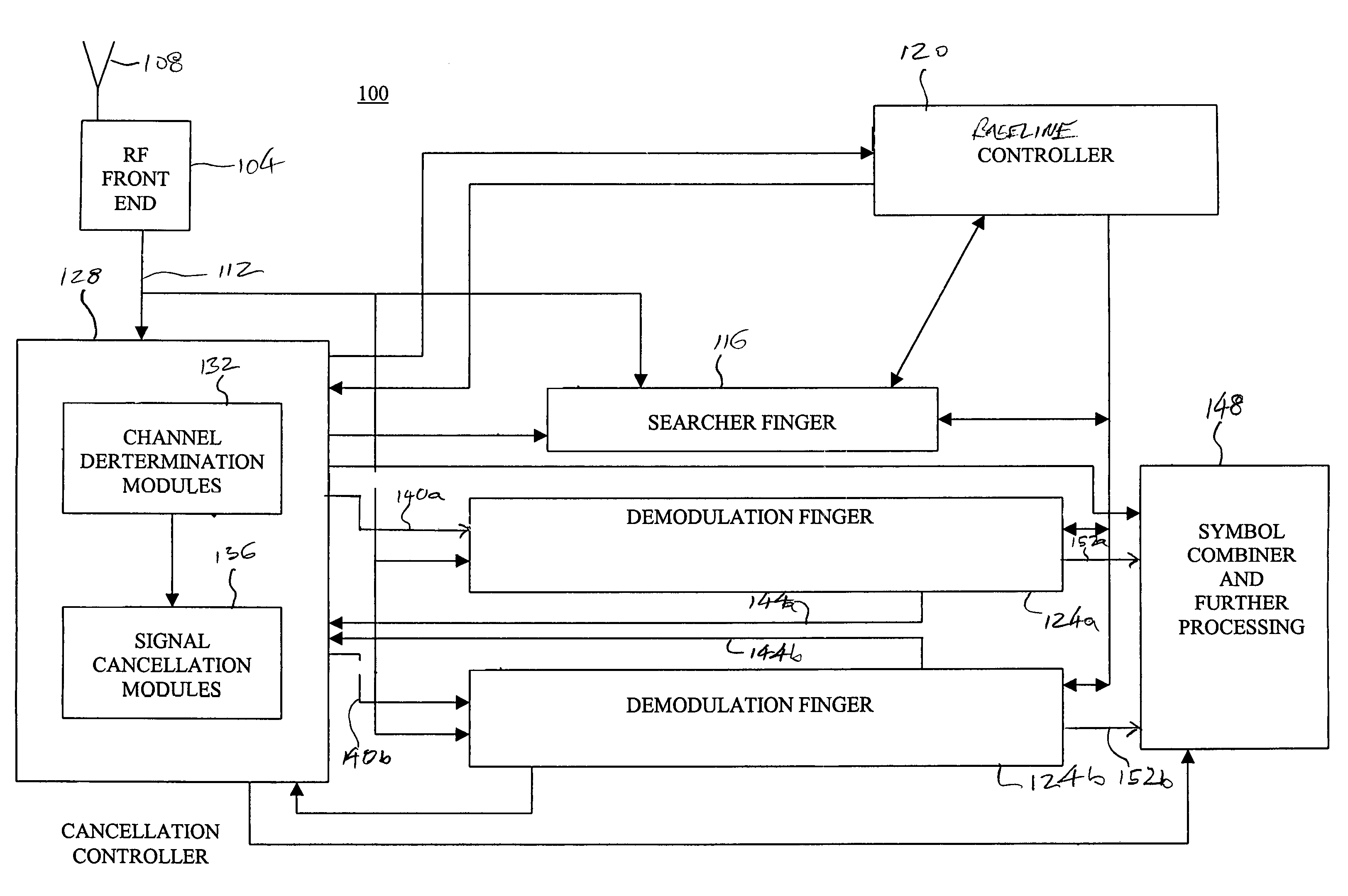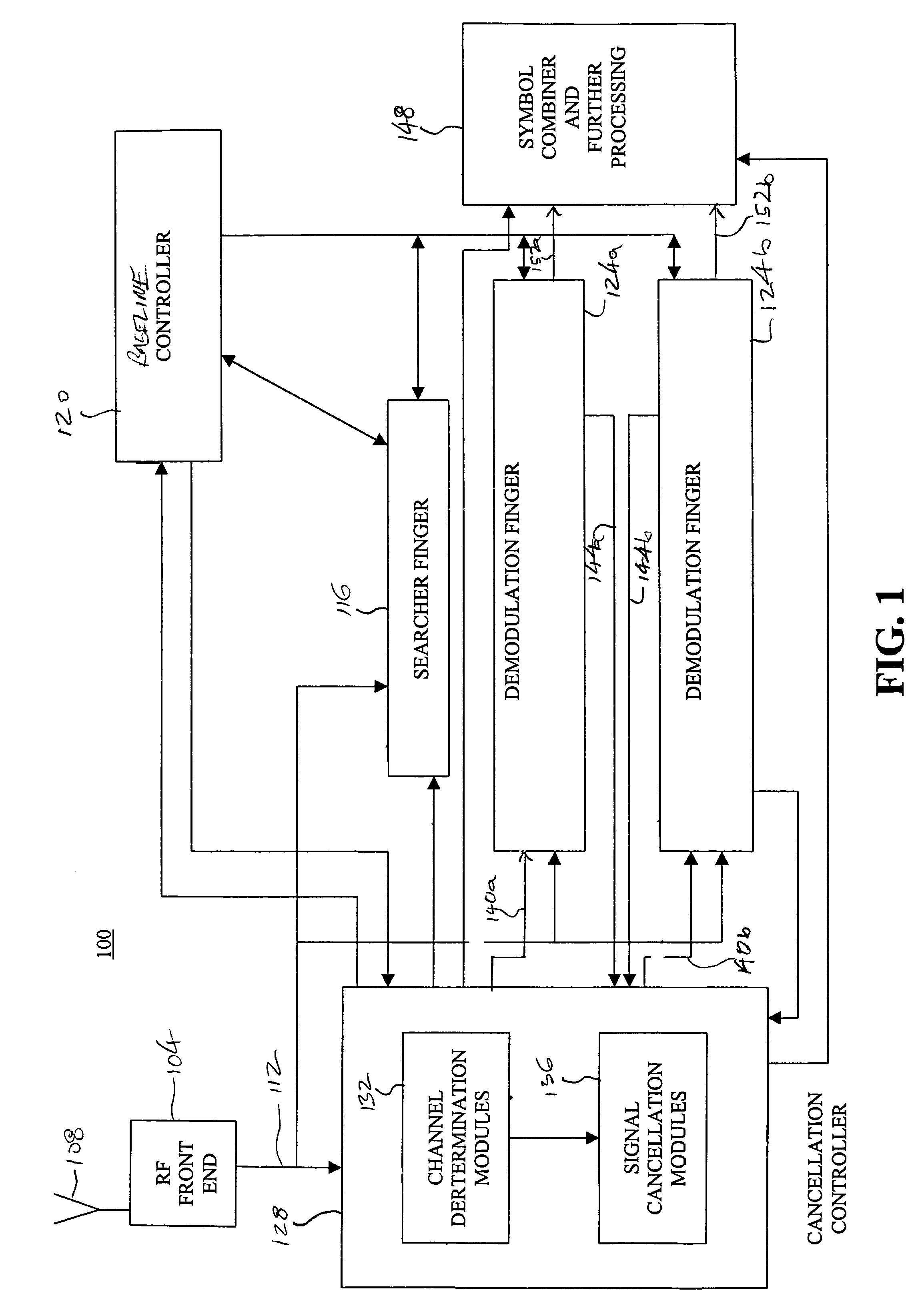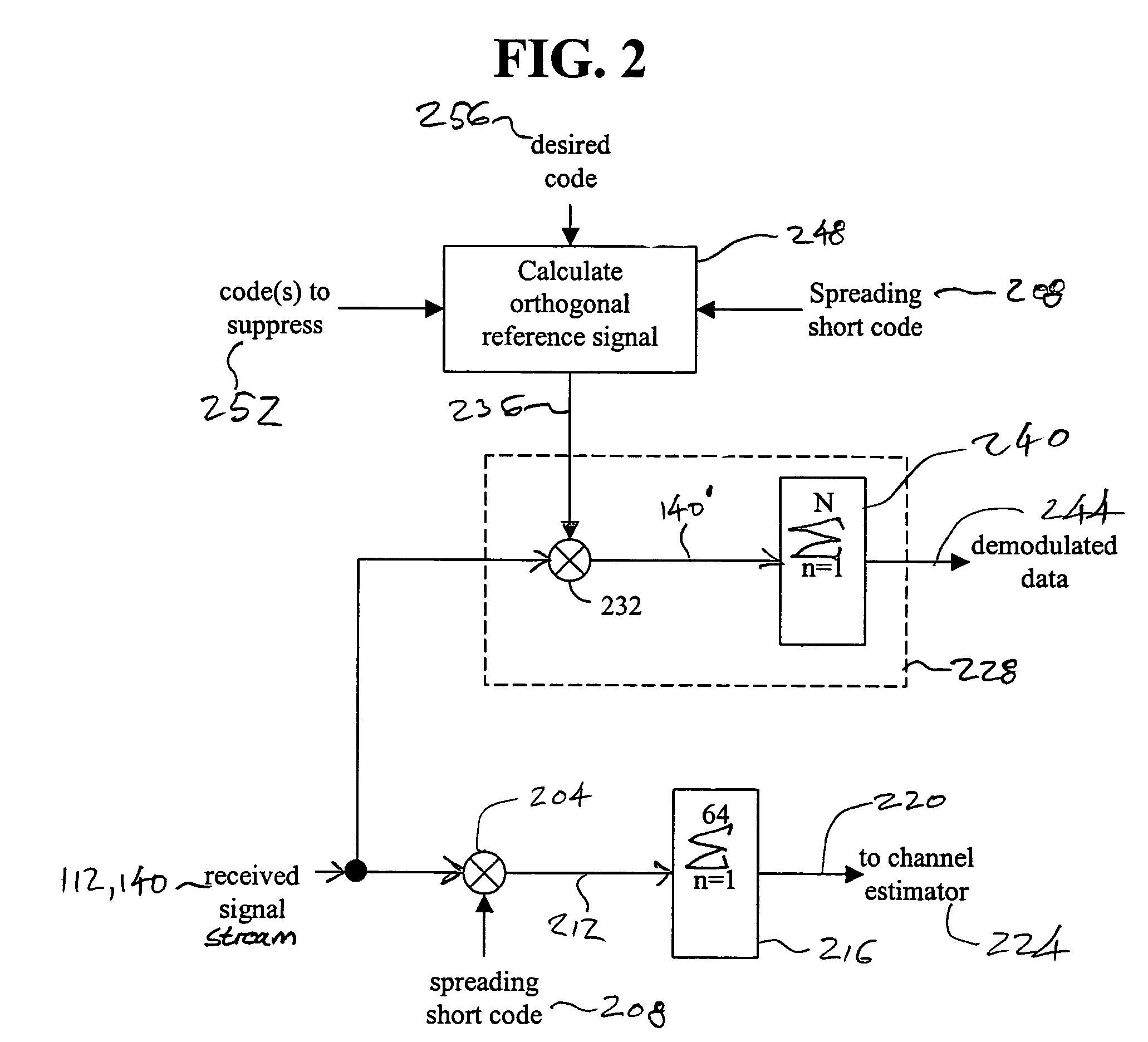Method and apparatus for interference suppression with efficient matrix inversion in a DS-CDMA system
- Summary
- Abstract
- Description
- Claims
- Application Information
AI Technical Summary
Benefits of technology
Problems solved by technology
Method used
Image
Examples
Embodiment Construction
[0022]A direct sequence code division multiple access (DS-CDMA) communication system includes a plurality of base stations and mobile stations. With reference now to FIG. 1, an interference cancellation enabled receiver 100 in accordance with an embodiment of the present invention is illustrated. As depicted in FIG. 1, signals are provided to a radio frequency front end 104 by an antenna 108. In a typical environment, a number of different signals, for example, signals produced by different base stations, different sectors of a base station, or multipath or reflected versions of the signals can be received at the radio frequency front end 104. As can be appreciated by one of skill in the art, signals from different base stations or different sectors of a base station are typically identified by an associated path number or pseudo-random number (PN) offset, which identifies the base station or base station and sector according to the time offset of the signal path. Multipath versions...
PUM
 Login to View More
Login to View More Abstract
Description
Claims
Application Information
 Login to View More
Login to View More - R&D
- Intellectual Property
- Life Sciences
- Materials
- Tech Scout
- Unparalleled Data Quality
- Higher Quality Content
- 60% Fewer Hallucinations
Browse by: Latest US Patents, China's latest patents, Technical Efficacy Thesaurus, Application Domain, Technology Topic, Popular Technical Reports.
© 2025 PatSnap. All rights reserved.Legal|Privacy policy|Modern Slavery Act Transparency Statement|Sitemap|About US| Contact US: help@patsnap.com



